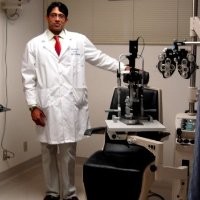Caring for your child’s vision is crucial as sight is a vital sense. It can be distressing to consider the possibility of your child experiencing any form of visual impairment. Nonetheless, there’s no need for undue alarm. It’s indeed paramount to detect any slight or potential vision damage early, but there are more effective and less invasive treatment options than ever before for an array of conditions.
In this article, we’ll discuss prevalent eye conditions in children, along with some of the most effective treatments that today’s highly trained surgeons and doctors employ to rectify them.
Astigmatism is a condition that is treatable and can occur in conjunction with both hyperopia (farsightedness) and myopia (nearsightedness). It is brought about by an irregular curvature of either the eye’s lens or the cornea, causing light entering the eye not to focus on a single point on the child’s retina. Symptoms of astigmatism include eye strain, headaches, and squinting due to blurry vision at all distances. Eyeglasses, contact lenses, and corrective surgery are common modern treatments for astigmatism. Surgeries like LASIK are also beneficial for those who prefer not to wear glasses, although the patient needs to be over 18 to qualify for this surgery.
Childhood Epiphora (Tearing) is excessive tearing in the eyes, which can be diagnosed in infancy in many cases, and it can also develop later in life. If present in an infant, it is typically an indication of a blocked tear drainage system. However, if there is no improvement, treatment options include eye drops and a tear sac massage. If these less invasive treatments are ineffective, your physician may suggest surgery to probe the tear drainage system.
Digital eye strain is a problem for working adults, and with the widespread use of smartphones and tablets, it is now also a serious issue for children. Consequently, we may get digital eye strain and dry eyes, which can cause long-term damage. However, there are plenty of preventative options.
Hyperopia (Farsightedness) is a condition where children can see distant objects more clearly than those that are closer to them. Many children benefit from prescription glasses, but there are also some new solutions like light-changing inlays and eye training programs.
Myopia (Nearsightedness) refers to a condition in which the child can see objects closer to them more clearly than they can see objects that are farther away. Myopia is treated very successfully with glasses for small children and with refractive surgeries like LASIK in older teenagers and adults.
Pediatric Cataracts, a condition where there’s cloudiness or opacity of the eye lens, can result in blurred vision. While we usually associate cataracts with older adults, they can also occur in very young children and even be present at birth.
Pediatric Glaucoma, a condition where there’s high pressure within the eye, can result in damage to the optic nerve and, as a result, can lead to permanent loss of vision.
Pediatric Ptosis refers to the involuntary drooping of the upper eyelid and can occur in both children and adults. If ptosis is significant or progressive, surgery is the preferred treatment.
Retinopathy of Prematurity (ROP) occurs due to abnormal blood vessel development in infants that are born prematurely.
Strabismus, the misalignment of the eyes, can take several different forms and can occur at any age. There are numerous modern treatment options for this impairment, depending on the root cause, including an eye patch, Botox injections, eyeglasses, and surgery.
The most challenging part of a childhood vision impairment is detecting the problem early on. No matter what symptoms you notice, it’s essential that you schedule an appointment with an eye hospital near you as soon as possible and consult our Pediatric Ophthalmologists.
The vast majority of children’s eye conditions can be addressed early on and lead to no, or very minimal, lasting effects, but only if there is early intervention.


Comments are closed for this post.